This document belongs to the Series:
Rescuing the San Diego River
Imagining a Greener Future for the San Diego River
Exploring a restored section of the river, and some before and after photos from this week's River Rescue clean up
Document created 22 November 2017, last updated 22 November 2017
Contents:
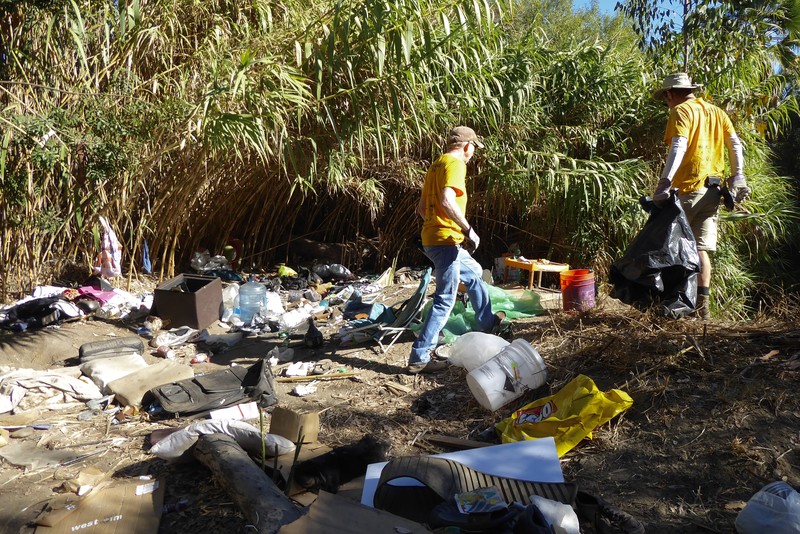
But going back week after week to sites that have been totally trashed can start to feel hard, too. The work we do is important for the ecology and health of the city and its residents, but with the number of people living in the river having increased, it does feel like we are barely managing to maintain a rubbishy status-quo. River residents arrive and move around, regularly building new camps in different parts of the channel. The sections of the river that we clean are often also impacted by more than garbage. Much vegetation seems to have been informally cleared by people to make space for encampments, and a large percentage of the remaining vegetation is seriously invasive.
To raise my own morale, I paid a visit to a stretch of the river in Santee in eastern San Diego County. I had heard that this area was a bit more restored and was being actively used for recreation by the general public. A healthy system of urban green spaces such as the one I saw in Santee can greatly improve a city’s attractivity while making it more environmentally resilient. I took the last six photos in this article as a reminder of the river’s potential. The sections of the river we clean may also one day provide a broad range of ecological functions, for example by serving as wildlife corridors or as a resting space for migratory species. Many local actors are working to impact the future of the San Diego River, including city representatives, homelessness advocates, law enforcement, property owners, and the River Park Foundation. By making a concerted effort to work together, these organizations can ensure that the entire length of the river one day becomes a beautiful and safe space for city residents to enjoy a wide range of outdoor activities close to their homes.
Before and after photos from today's clean-up
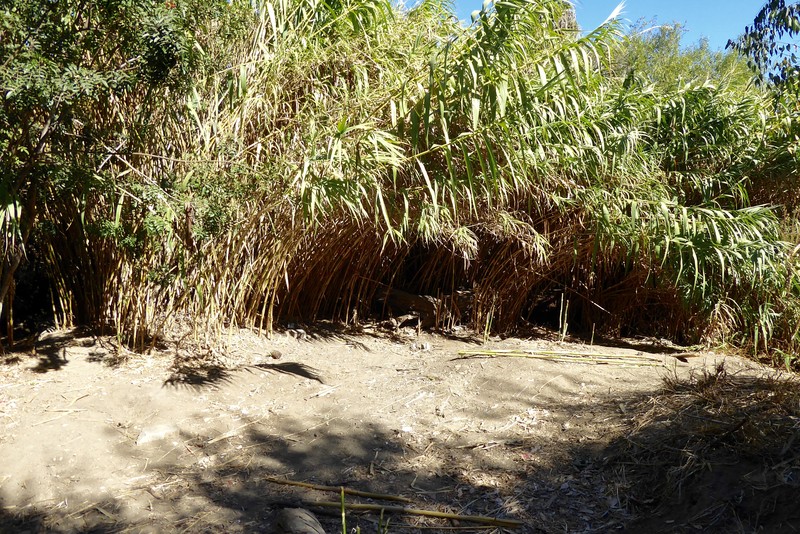
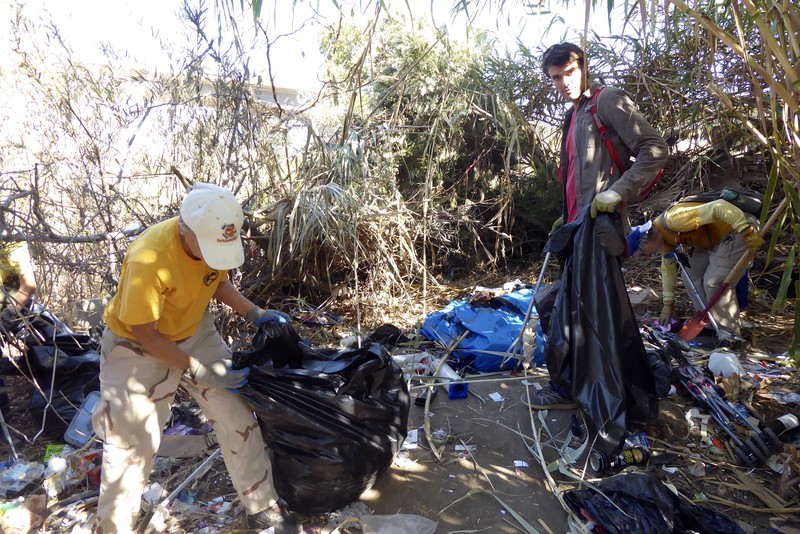
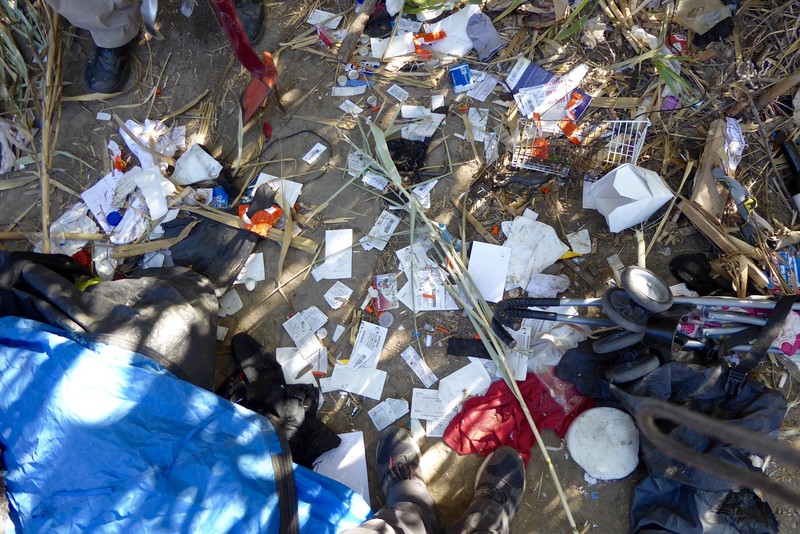
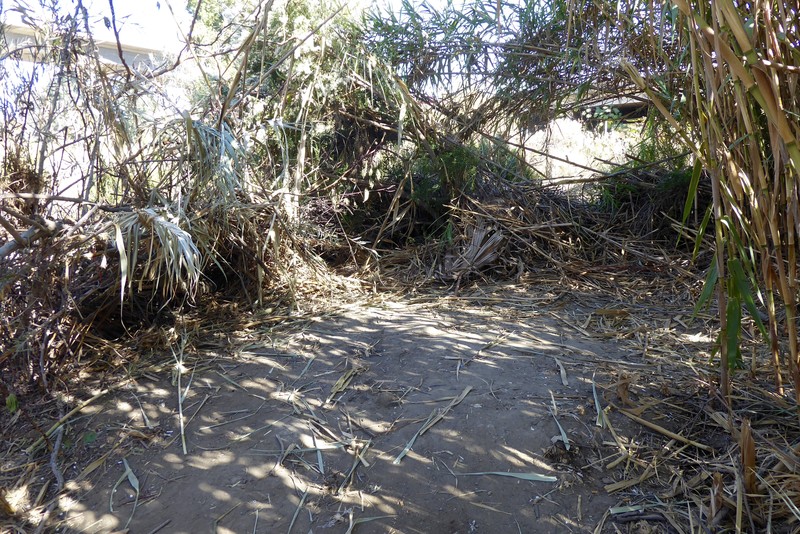
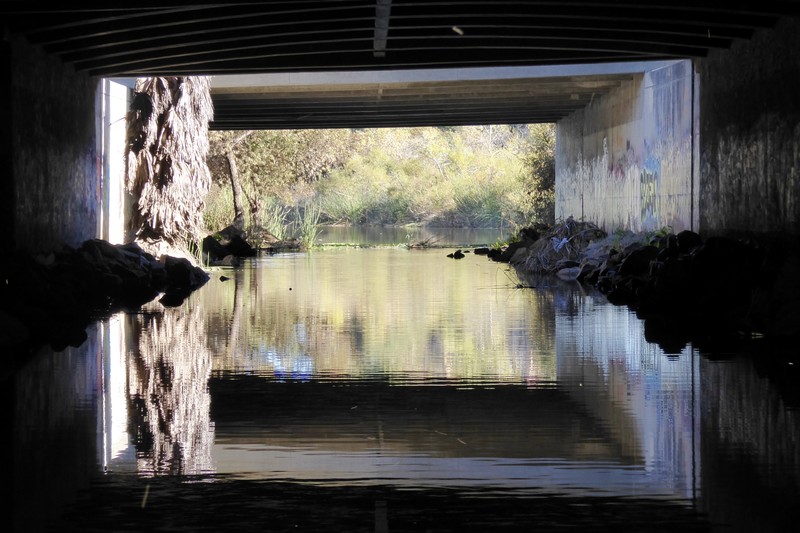
Imagining the river's future

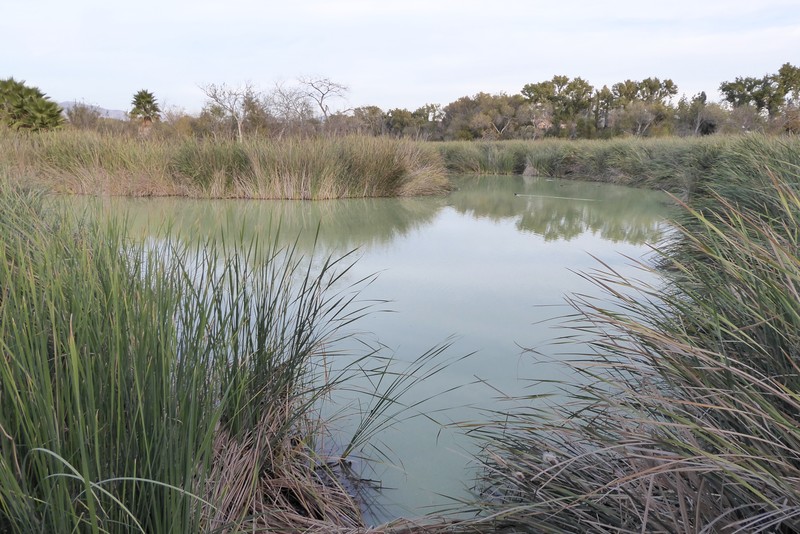
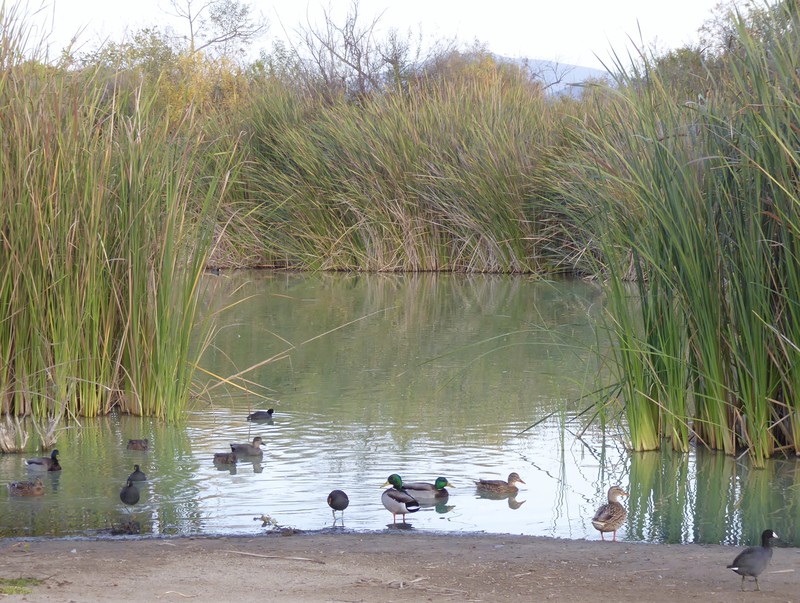
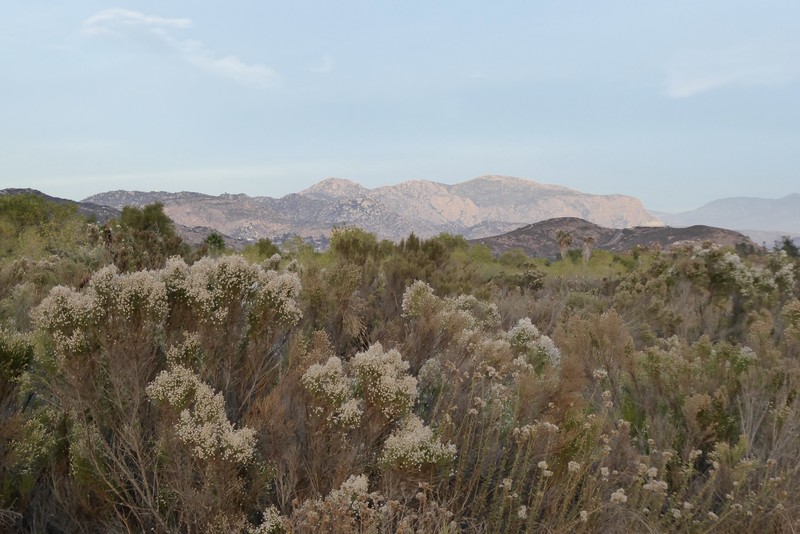
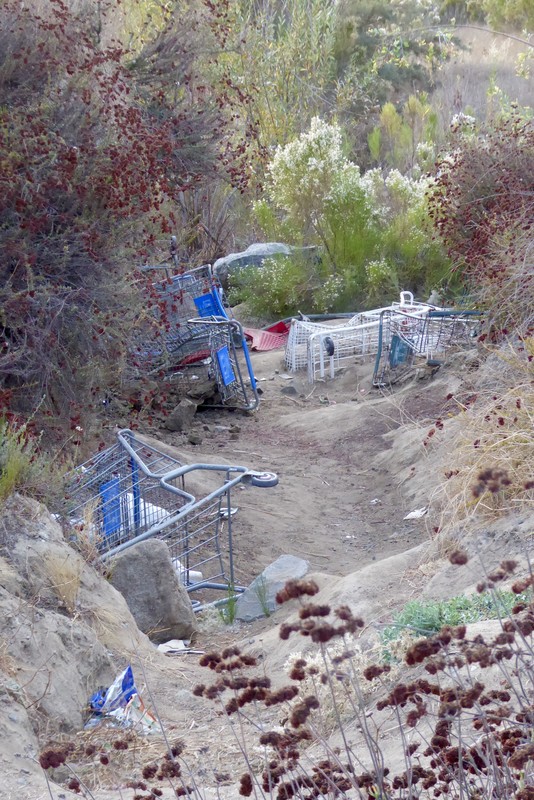

Comments
No comment available for this document
Ratings
Note that ratings are used to rank and display documents in this website's 'The Open Earth Buzz' headlines.
Ratings details:
Must Know: you think that the document presents valuable information, that should be widely known.
Great Doc: an especially good document (interesting subject, nice story or images/videos, fun to read or watch, well written or presented...).
Achievement: where an individual or group's action in nature has produced interesting (or valuable or beneficial) results and deserves recognition and encouragement.

This section of the river in Santee is more like a lake. Photo by Katy Chappaz.

Walking trails near the San Diego River in Santee, where I went to remind myself of what we're working towards. There are also playgrounds, picnic areas, basketball courts and a dog park nearby. Photo by Katy Chappaz.

Coots, mallards and moorhens enjoy the river near Santee. Photo by Katy Chappaz.

This stretch of land near the San Diego River in Santee has been closed off to let native plants re-establish themselves. View towards El Cajon Mountain/El Capitain. Photo by Katy Chappaz.

It's still not perfect but the work seems far more manageable. Photo by Katy Chappaz.

This bridge over a small tributary to the San Diego River is a visually pleasing addition that makes the space more inviting to the public. Photo by Katy Chappaz.

An abandoned encampment next to the San Diego River this morning, before it was cleaned up. Photo by Katy Chappaz.

The same encampment as above, after the trash was removed. The Arundo Donax in the background is an invasive species. Photo by Katy Chappaz.

Before photo of another encampment on this morning's to-do list. Photo by Katy Chappaz.

A close-up of the trash in the above camp. The small, orange, cylindrical objects are needle caps. Photo by Katy Chappaz.

The site after clean up. Photo by Katy Chappaz.

A section of the river near this morning's clean-up site that flows beneath the 163 freeway. Photo by Katy Chappaz.
×
